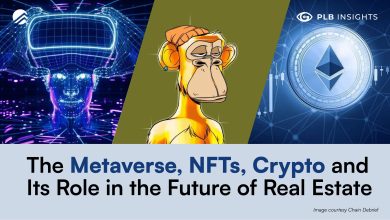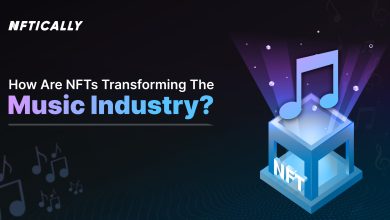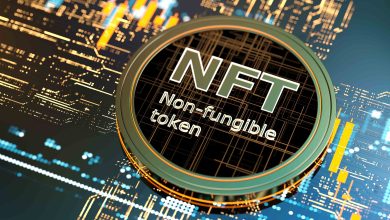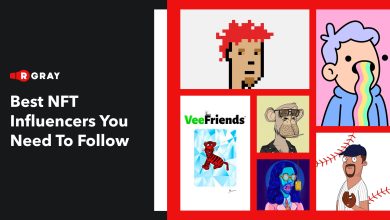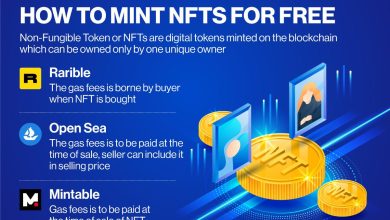Exploring Digital Art NFTs: Creators and Platforms

- Understanding the Rise of Digital Art NFTs
- Exploring the Impact of NFTs on the Art World
- Meet the Artists Behind the Digital Art NFT Craze
- Top Platforms for Buying and Selling Digital Art NFTs
- Navigating the World of Blockchain and NFTs in Art
- The Future of Digital Art Collectibles: NFT Trends to Watch
Understanding the Rise of Digital Art NFTs
Digital art NFTs have been gaining popularity in recent years as more artists and collectors embrace this new form of art ownership. NFTs, or non-fungible tokens, are unique digital assets that are stored on a blockchain, making them one-of-a-kind and easily verifiable. This rise in digital art NFTs can be attributed to several factors, including the growing interest in cryptocurrency and blockchain technology, as well as the desire for artists to reach a wider audience and gain more control over their work.
One of the key reasons for the rise of digital art NFTs is the ability for artists to tokenize their work, allowing them to sell limited editions or even individual pieces directly to collectors. This direct-to-consumer model cuts out the middleman, giving artists more autonomy and potentially higher profits. Additionally, the scarcity and authenticity of NFTs make them highly desirable to collectors who are looking for unique and valuable digital assets to add to their portfolios.
Another factor contributing to the popularity of digital art NFTs is the sense of community and collaboration that has emerged within the NFT space. Artists are able to connect with other creators, collectors, and enthusiasts through online platforms and social media, fostering a supportive and creative environment. This sense of community has helped to drive interest in digital art NFTs and has led to a surge in new artists entering the space.
Overall, the rise of digital art NFTs can be seen as a natural evolution of the art world, as technology continues to shape how we create, consume, and interact with art. As more artists and collectors embrace this new form of ownership, the possibilities for digital art NFTs are endless, opening up new opportunities for creativity, collaboration, and innovation in the art world.
Exploring the Impact of NFTs on the Art World
Exploring the impact of NFTs on the art world has been a topic of great interest and debate in recent years. NFTs, or non-fungible tokens, have revolutionized the way digital art is bought, sold, and collected. These unique tokens are stored on a blockchain, making them one-of-a-kind and verifiable. This has opened up a whole new world of possibilities for artists, allowing them to monetize their digital creations in ways that were previously impossible.
One of the key impacts of NFTs on the art world is the democratization of the art market. By removing the need for intermediaries such as galleries and auction houses, artists can now sell their work directly to collectors, bypassing traditional gatekeepers. This has empowered artists to take control of their own careers and reach a global audience like never before.
Another significant impact of NFTs on the art world is the potential for increased transparency and provenance. Because NFTs are stored on a blockchain, the entire transaction history of a digital artwork is recorded and cannot be altered. This provides collectors with a level of assurance about the authenticity and ownership of a piece that was previously difficult to achieve in the digital realm.
Overall, the impact of NFTs on the art world is still being realized, but it is clear that they have the potential to revolutionize the way we buy, sell, and collect art. As more artists and collectors embrace this new technology, we can expect to see even greater changes in the art market in the years to come.
Meet the Artists Behind the Digital Art NFT Craze
Get to know the talented artists who are driving the digital art NFT craze with their innovative creations. These creators are revolutionizing the art world by leveraging blockchain technology to authenticate and sell their unique pieces as non-fungible tokens.
One of the prominent figures in the digital art NFT space is Beeple, whose groundbreaking artwork “Everydays: The First 5000 Days” sold for a record-breaking price at auction. Beeple’s surreal and thought-provoking pieces have captivated audiences worldwide, showcasing the immense potential of NFTs in the art market.
Another artist making waves in the NFT scene is Pak, known for their abstract and futuristic digital artworks. Pak’s creations blur the lines between art and technology, pushing the boundaries of what is possible in the digital realm. Their innovative approach has garnered significant attention and acclaim in the art community.
On the platform side, Nifty Gateway has emerged as a leading marketplace for digital art NFTs, providing a space for artists to showcase and sell their work to a global audience. With its user-friendly interface and seamless transaction process, Nifty Gateway has become a go-to platform for both established and up-and-coming artists looking to enter the NFT market.
As the digital art NFT craze continues to gain momentum, these artists and platforms are at the forefront of a new era in the art world. By embracing blockchain technology and reimagining the concept of ownership, they are reshaping the way we perceive and interact with art in the digital age.
Top Platforms for Buying and Selling Digital Art NFTs
When it comes to buying and selling digital art NFTs, there are several top platforms that have gained popularity in the art community. These platforms provide a marketplace for artists to showcase and sell their digital creations as non-fungible tokens. Here are some of the leading platforms:
- OpenSea: OpenSea is one of the largest NFT marketplaces where users can buy, sell, and trade digital art NFTs. It offers a wide range of digital artworks from various artists.
- Rarible: Rarible is another popular platform that allows artists to create and sell their digital art as NFTs. It also enables users to participate in the creation of new NFTs through its unique token system.
- Foundation: Foundation is known for its curated selection of digital art NFTs, making it a desirable platform for both artists and collectors. It focuses on quality and exclusivity in the artworks it features.
- SuperRare: SuperRare is a platform that emphasizes the scarcity and uniqueness of digital art NFTs. It showcases limited edition artworks from a select group of artists, making it a sought-after platform for collectors.
- Nifty Gateway: Nifty Gateway is a platform that collaborates with well-known artists and brands to release exclusive digital art NFT drops. It has gained attention for its high-profile releases and partnerships.
These platforms offer artists the opportunity to reach a global audience and monetize their digital creations through the sale of NFTs. They have revolutionized the way digital art is bought and sold, providing a new avenue for artists to showcase their work and for collectors to own unique pieces of digital art.
Navigating the World of Blockchain and NFTs in Art
When it comes to navigating the world of blockchain and NFTs in art, there are a few key things to keep in mind. First and foremost, it’s important to understand what blockchain and NFTs are and how they work. Blockchain is a decentralized digital ledger that records transactions across a network of computers, while NFTs, or non-fungible tokens, are unique digital assets that are stored on the blockchain. By leveraging blockchain technology, artists can create and sell digital art as NFTs, allowing them to prove ownership and authenticity.
There are several platforms that artists can use to mint and sell their digital art as NFTs. Some popular platforms include OpenSea, Rarible, and Foundation. These platforms provide artists with the tools they need to create, tokenize, and sell their digital art to collectors around the world. By using these platforms, artists can reach a wider audience and potentially earn more money from their work.
It’s also important for artists to consider the environmental impact of minting and selling NFTs. The process of minting NFTs requires a significant amount of energy, which has raised concerns about the carbon footprint of digital art. Some artists have started to explore alternative blockchain networks that are more energy-efficient, such as Tezos and Flow. By choosing to mint their NFTs on these networks, artists can reduce their environmental impact and create a more sustainable future for digital art.
The Future of Digital Art Collectibles: NFT Trends to Watch
The future of digital art collectibles, specifically Non-Fungible Tokens (NFTs), is an exciting space to watch as it continues to evolve and grow. NFTs have gained significant traction in the art world, offering artists a new way to monetize their work and collectors a unique opportunity to own digital assets.
One trend to watch in the NFT space is the rise of curated platforms that cater to specific niches or genres within digital art. These platforms provide a space for artists to showcase their work to a targeted audience, making it easier for collectors to discover pieces that align with their interests. By focusing on specific niches, these platforms can create a more personalized and engaging experience for both artists and collectors.
Another trend to keep an eye on is the integration of blockchain technology into the creation and distribution of NFTs. Blockchain technology offers increased security and transparency, making it easier for artists to prove ownership of their work and for collectors to verify the authenticity of the pieces they are purchasing. As blockchain technology continues to advance, we can expect to see even more innovative uses of NFTs in the digital art space.
Additionally, collaborations between artists and brands are becoming more common in the NFT space. These collaborations can help artists reach a wider audience and introduce their work to collectors who may not have otherwise discovered it. By partnering with brands, artists can leverage their existing fan base and marketing resources to promote their NFTs, creating new opportunities for exposure and sales.
Overall, the future of digital art collectibles is bright, with NFTs offering artists and collectors a new way to engage with and monetize digital art. By staying informed on the latest trends and developments in the NFT space, artists and collectors can position themselves for success in this rapidly growing market.
